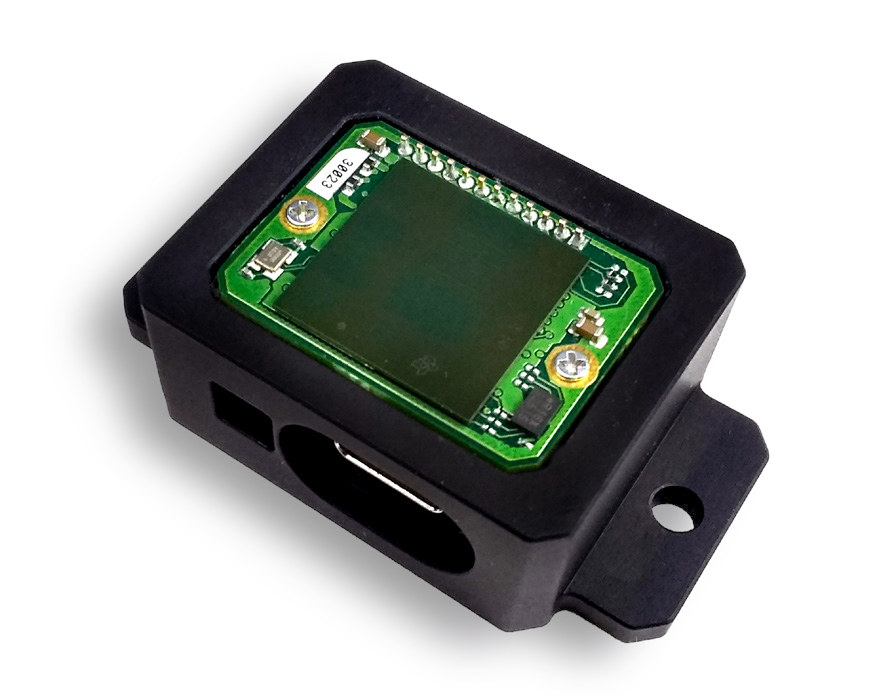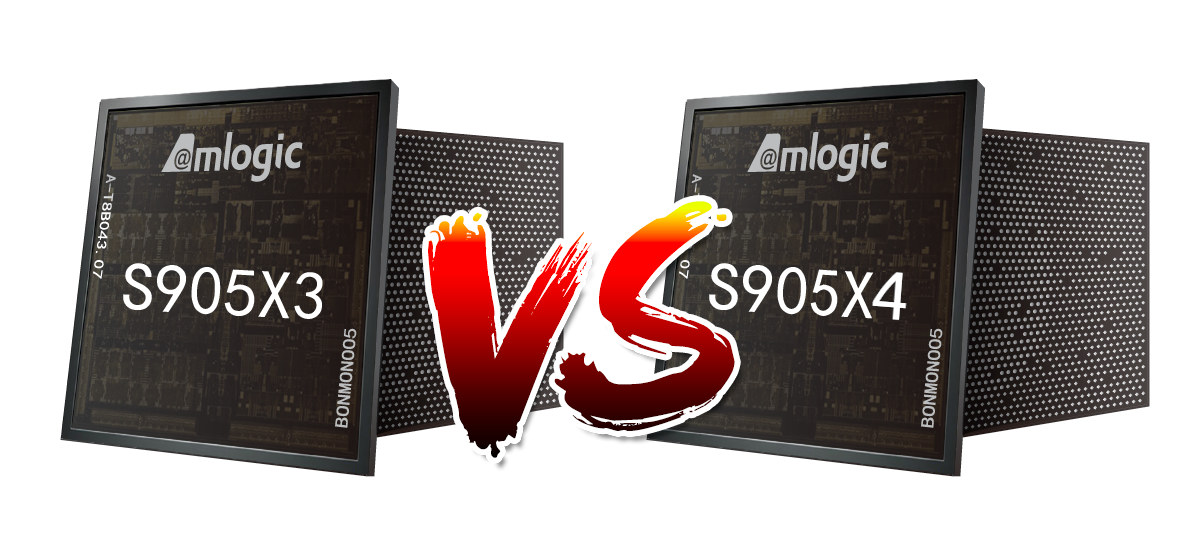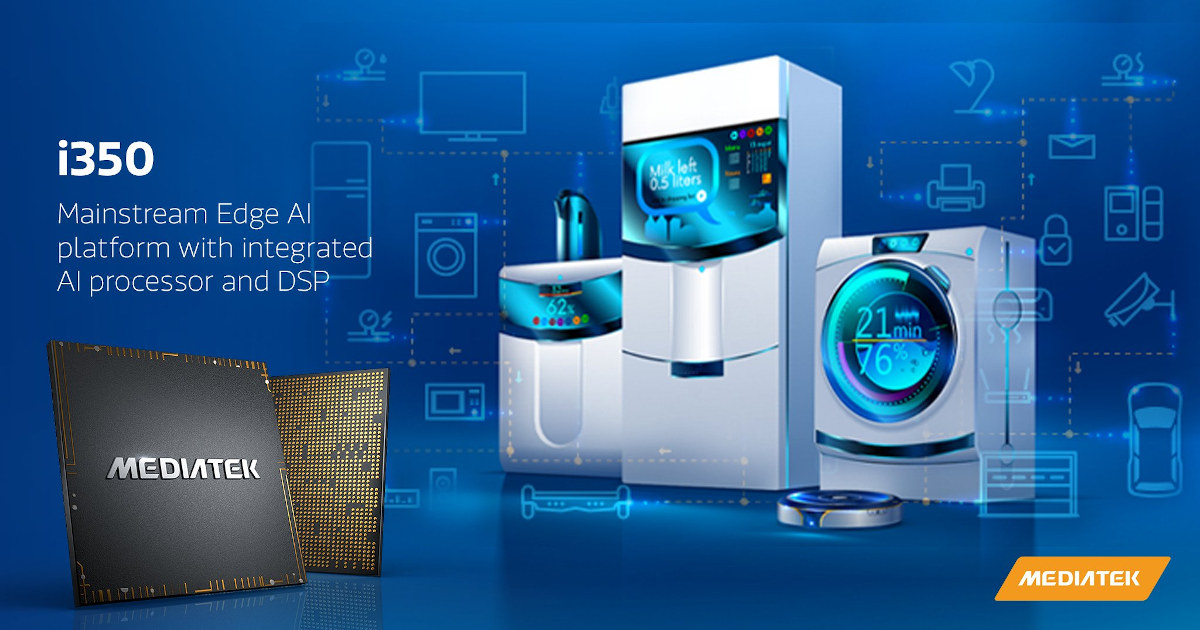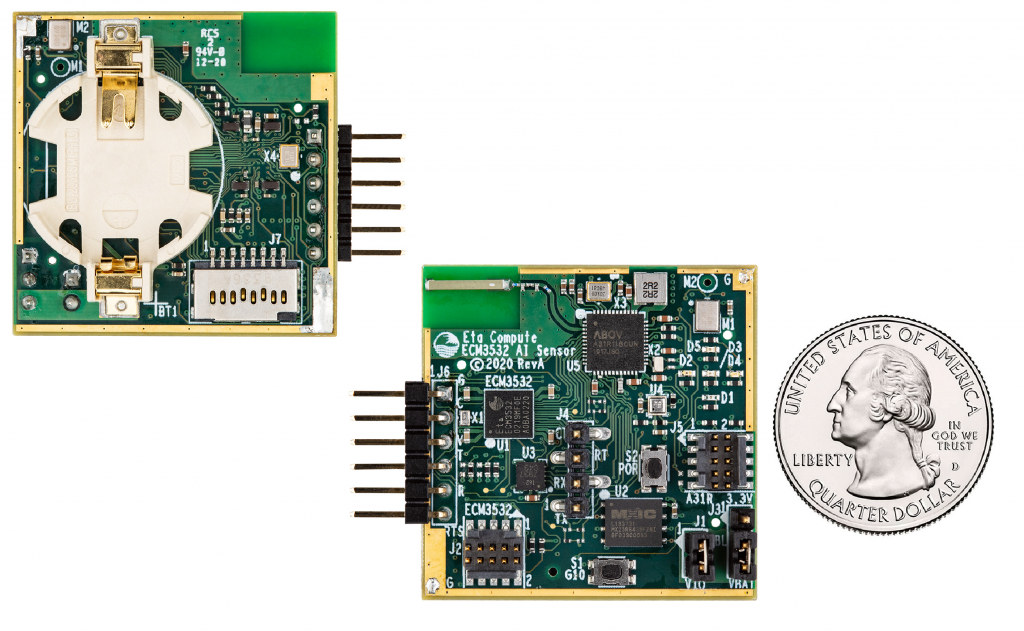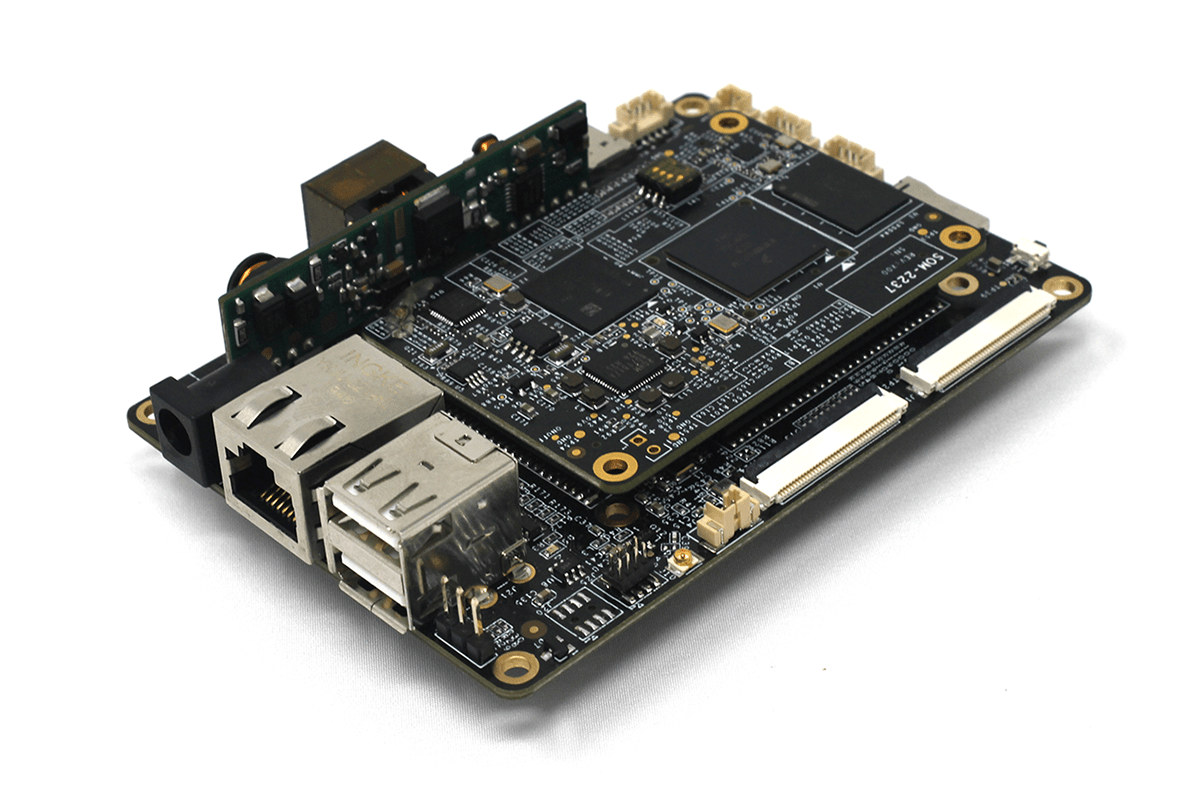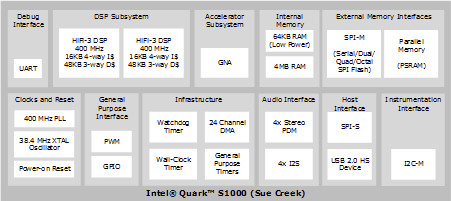The 1″ cube mmWave RS-6843AOPUA radar sensor, announced by D3 Engineering, is a miniature radar device that enables easy integration of radar algorithms for industrial applications. The RS-6843AOPUA radar sensor is an AECQ-100-qualified 60 GHz device that integrates a Texas Instruments C674x DSP for algorithms and an Arm Cortex-R4F microcontroller unit for decision-making and interfacing. It also has a radar accelerator and an “on-package antenna array.” The RS-6843AOPUA radar sensor features a 1-inch cube form factor, heat-spreading metal body, mounting tabs, and a USB-Serial interface. The USB-Serial interface could be used to test and evaluate the radar sensor. Functions and Applications of the Radar Sensor TI C674x DSP: FMCW (Frequency Modulated Continuous Wave) signal processing, Implementation of algorithms Radar Accelerator: Radar data processing Arm Cortex-R4F MCU: Object tracking, Classification, Communications “The RF front end integrates a PLL, three transmitters, four receivers, and baseband ADC, and allows the sensor to cover […]
Amlogic S905X3 vs S905X4 – Features Comparisons
AV1 capable Amlogic S905X4 processor has been expected for more than a year, and only now are we starting to see announcements of S905X4 TV boxes and development kits. So it may be a good time to compare the features of the new Amlogic S905X4 processor again its predecessor, namely S905X3, and see if there are other notable differences apart from support for AV1 open video codec. We’ll use data from S905X3 specifications, S905X2 vs S905X3 comparison, and a post on SDMC LinkedIn page. Amlogic S905X4 will be slightly faster due to the higher (default) maximum CPU frequency of 2.0 GHz, but most people will not notice the difference. S905X4 is supposed to support Vulkan 1.1, while S905X3 does not, but I believe this is just due to more up-to-date Android SDK, and not differences in the silicon itself. S905X4 supports Nagra DRM, a more recent version of HDCP, and […]
MediaTek i350 Edge AI Processor is Designed for Mainstream AIoT & Smart Home Applications
MediaTek is well known for its mobile processors, but recently the company also manufactures IoT and AI processors such as MediaTek i300/i500 and MediaTek i700. The company has now introduced an updated to the entry-level MediaTek i300 processor with MediaTek i350 quad-core Cortex-A53 processor integrated with DSP and AI processor for vision and voice edge processing applications including facial, object, gesture, motion recognition, license plate recognition (LPR), voice activation and speed recognition, sound isolation, bio-tech and biometric measurements, and more. MediaTek i350 key features and specifications: Processor – 4x Arm Cortex-A53 cores up to 2.0 GHz with 512KB unified L2 cache, Arm NEON GPU – Arm Mali-G52 MC1 up to 800Mhz with support for OpenGL ES, OpenCL, and Vulkan APIs Co-processor – MediaTek APU 1.0 AI Processor up to 500MHz (285 GMACs) Memory -LPDDR4/LPDDR4X up to 3200Mbps, LPDDR3, DDR3/L up to 1866Mbps Storage – eMMC 5.1 flash (SLC/MLC/TLC) Display Interfaces […]
ECM3532 AI Sensor Board Features Cortex-M3 MCU & 16-bit DSP “TENSAI” SoC for TinyML Applications
Eta Compute ECM3532 is a system-on-chip (SoC) with a Cortex-M3 microcontroller clocked at up to 100 Mhz, and NXP CoolFlux 16-bit DSP designed for machine learning on embedded devices, aka TinyML, and part of the company’s TENSAI platform. The chip is also integrated into the ECM3532 AI sensor board featuring two MEMS microphones, a pressure & temperature sensor, and a 6-axis motion sensor (accel/gyro) all powered by a CR2032 coin-cell battery. ECM3532 AI sensor board specifications: SoC – ECM3532 neural sensor processor with Arm Cortex-M3 core @ up to 100 MHz (< 5μA/MHz run mode) combines with 512KB embedded FLASH, 256KB SRAM, and 8KB BootROM + secure bootloader, and NXP CoolFlux 16-bit DSP @ up to 100 MHz with 32KB program memory, 64KB data memory. See the product brief for details. Storage – 64Mbit serial Flash for datalogging Connectivity – Bluetooth 4.2 LE via ABOV Semiconductor A31R118 and PCB antenna […]
NXP i.MX 8M Mini Pico-ITX SBC Comes with Audio DSP, Optional PoE and Google Coral M.2 Module
We’ve covered several NXP i.MX 8M Mini SBC‘s since the announcement of the processor in 2018 as the first i.MX SoC manufactured with a 14nm process allowing for a higher CPU clock of 2.0 GHz compared to the 1.5 GHz frequency used with the original i.MX 8M processor. i.MX 8M Mini also removes some features (4K video playback, some video interfaces, …) in order to lower the cost of the processor. Companies are still releasing new i.MX 8M SBCs regularly, but we don’t always cover them all since many often do not offer much compared to the competition. But Estone Technology EMB-2237-AI Pico-ITX SBC has some unusual features and options including a Cirrus Logic audio DSP, as well as support for a PoE module and Google Coral M.2 AI accelerator module. EMB-2237-AI SBC is comprised of a system-on-module and baseboard with the following specifications: Estone SOM-2237 module SoC – […]
Register to the Embedded Online Conference for Free Before February 29th
Events such as the Embedded Linux Conference and Embedded Systems Conference take place in the US and Europe every year. There are plenty of talks and it’s certainly good for networking, but you need to travel to the event and the entrance fee to have access to all session costs several hundred dollars if you book early, and over one thousand dollars if you register close to the date of the event. Most ELC/ELCE videos usually end up on The Linux Foundation YouTube channel, but the Beningo Embedded Group and Embedded Related website decided to organize a similar conference happening online and simply called the “Embedded Online Conference“. The conference offers topics about embedded systems, DSP, machine learning and FPGA and will take place on May 20. There are currently 17 talks, but they are still calling for talks so more sessions may be added before the actual event. You’ll […]
Arm Helium Delivers up to 15x Performance Uplift for Machine Learning on Cortex-M MCUs
Arm has just unveiled Armv8.1-M architecture that adds Arm Helium technology, the M-Profile Vector Extension (MVE) for the Arm Cortex-M cores that will improve the compute performance of Cortex-M based microcontrollers. Helium will deliver up to 15 times more machine learning (ML) performance and up to 5 times uplift to signal processing allowing local decision-making on low-power embedded devices. Helium instructions will enable new applications for Arm Cortex-M microcontrollers in audio devices, sensor hubs, keyword spotting, voice command control, power electronics, communications and still image processing. Helium and Neon (the Advanced SIMD technology for Arm Cortex-A processors) are similarities but Helium has been designed for efficient signal processing performance in small processors. One different illustrated below is that while NEON loads 128-bit instructions (e.g. VLDR, VLMA), Helium will split up 128‑bit wide instruction into four equally sized chunks, called “beats” (labelled A to D) due to difference between Cortex-M and […]
Intel Quark S1000 “Sue Creek” Processor to Support On-Chip Speech Recognition
Intel may have announced plans to discontinue several of their IoT boards, but based on some documents I received, the company has not given up on the Quark family, although they may have given up on the Intel architecture for low power microprocessor, as Intel Quark S1000 – codenamed “Sue Creek” – will feature two Tensilica LX6 cores (yes, just like ESP32), and is designed to handle speech recognition at the edge (e.g. locally), so some of your voice commands should still work when Internet is down. Intel Quark S1000 key features and specifications: Digital Signal Processors Dual Tensilica LX6 cores @ 400 MHz with HiFi3 DSP Single precision scalar floating-point instructions 16KB 4-way I$; 48KB 4-way D$ Up to 2400 DMIPS, 3.2 GMACS (16×16), 800 MFLOPS of Compute Speech Accelerators A GMM (Gaussian Mixture Model) and neural network accelerator Low power keyboard and limited vocabulary recognition Up to 9.6 […]


